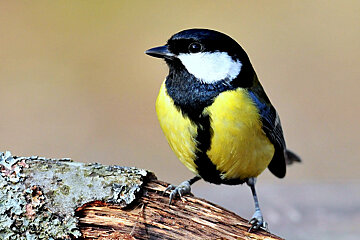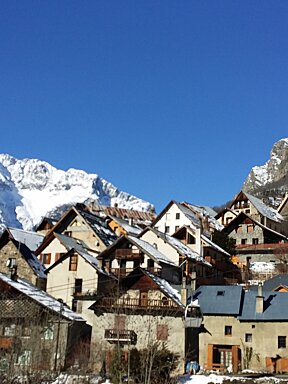





Birdwatching in Les 2 Alpes
Twitching, birding or bird spotting in & around Les 2 Alpes
Having worked as a beach lifeguard and surf, paddleboard, kayak and canoe instructor for around 10 years now, I am always being asked by inquisitive tourists at the beach “what's that bird over there?”
After around 5 years of embarrassingly replying with the stock answer “that's a seagull” I decided a few years back to try and learn a bit more about bird watching and more so bird identification. To be honest I found it really interesting and far trickier than I imagined.
So if you fancy a day away off from slopes or are here as a non-skier, time spent bird watching really is a great way to spend a day in the mountains.
You really don't need a lot of equipment to give it a go, any combination of the following will help you – but fear not if you don't have any of the these bits the following guide will give you a good idea as to what you are looking (and listening) out for – bird watching is as much about listening as it is about looking!.
Ideally:
- Binoculars
- Note pad
- Bird identification book (the one below is really good)
There is a wide array of birds that you will be looking out for, but you are most likely to see the following:
Snow Finch – (Montifringilla Nivalis) length 17cm/wingspan 34-38cm
Finch like member of the sparrow family with a considerable amount of white plumage. Adult has a blue-grey head. Its voice is sparrow-like song including a Chaffinch like ‘pink’.
Bullfinch – (Pyrrhula Pyrrhula) length 15cm/wingspan 25cm
A dumpy finch with a stubby, black bill and conspicuous white rump, seen in flight. Rather a shy and retiring species, the Bullfinch is heard more than it is seen; its soft, piping calls carry a surprising distance, they often travel in pairs.
Alpine Accentor – (Prunella Collaris) length 18cm/wingspan 30-33cm
Adult head, breast and belly is ash-grey with brownish tinge in some lights. Chin whitish with neat black speckling. It's voice is a chattering musical warble; ventriloquial rippling call.
Great Tit – (Parus Major) length 14cm/wingspan 22.5-25.5cm
The largest common tit, with quite a long tail. The adult is basically yellow-green above and yellow below. Wings have black flight feathers. A loud call ‘tink’, ‘tink’, ‘tink’, with a far-carrying song of ‘teacher, ‘teacher’, ‘teacher’.
Blue Tit – (Cyanistes Caeruleus) length 11.5cm/wingspan 17.5-20cm
The adult is the only European tit with a bright blue crown, bordered with white. Upper parts are yellowish-green, underparts sulphur yellow. It's call is ‘tsee-tsee’, with its song a tremolo ‘tsee-tsee-tsee-tsuhuhuhu’.
Marsh Tit – (Poecile Palustris) length 11.5cm/wingspan 18-19.5cm
Adult has a glossy black cap, small black chin and throat. Wings, tail and upper parts are a greyish-brown. It's call is ‘pitchoo’ and song is a nasal ‘ter-char-char-char’ repetition on one note.
Chaffinch - (Fringilla Coelebs) length 14.5cm/wingspan 25-28cm
Male has a very distinctive pink face, breast and belly. Tail is black with white outer feathers. It's call is a ‘chink’ with a ‘wheet’ song.
Goldfinch – (Carduelis Carduelis) length 12cm/wingspan 21-25cm
Easily identified by a golden-yellow panel along the centre of a black wing and head. Call is a liquid ‘tswitt-witt-witt’ and a song of characteristic cheerful tinkling.
Greenfinch – (Carduelis Chloris) length 15cm/wingspan 25-27cm
Striking olive green and yellow in colour, with brown tail and flight feathers. A loud nasal ‘tsweee’ call and a rapid strong twittering song.
Crested Tit – (Lophophanes Cristatus) length 11.5cm/wingspan 17-20cm
Small tit with a backwards pointing black crest, with feathers tipped of white. Grey brown wings and tails with a buff-brown upper part. A low pitched purring trill call, and a song that makes repeated use of the call.
Coal Tit – (Periparus Ater) length 11.5cm/wingspan 17-21cm
Glossy black cap with big white cheeks. Smaller than the blue Tit. A pipping ‘tsee’ call and a loud and clear ‘teechu, teechu, teechu’ song.
Magpie – (Pica Pica) length 44-46cm/wingspan 52-60cm
Unmistakeable black and white bird. Call is staccato chatter ‘chacker, chacker, chacker, chacker’.
































